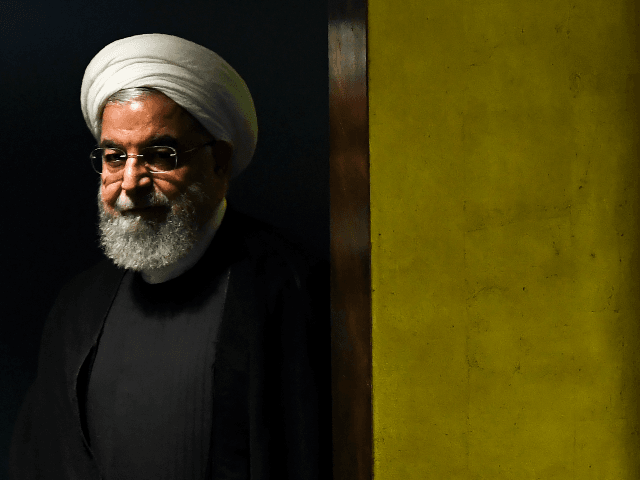Iran Protesters Target Clerics, Regime Kills over
Post# of 52067

< >

Amnesty International said on Tuesday that Iranian security forces have killed at least 106 civilians in 21 cities during five days of protests, and there are “some reports suggesting as many as 200 have been killed.”
Radio Farda detailed the allegations of brutality against the Iranian government, cobbled together from the trickle of information escaping through the regime’s Internet blockade:
Fragmented reports reaching international media, despite government clampdown on information and the Internet, indicate that the most violent attacks on demonstrators have taken place in Southern Iran in Behbahan, Mahshahr, Bushehr, and Shiraz as well as the Kurdish towns of Javanroud and Marivan in the West, and southwestern suburbs of Tehran, particularly in Shahryar.
Several reports and individuals phoning in on foreign-based satellite radio and TV stations say IRGC and Basij militia have been shooting directly at the demonstrators aiming at their heads.
A video showing the protests at Shiraz University show IRGC gunmen opening fire at demonstrators with machine guns. Elsewhere, other videos show Basij militia’s snipers shooting the protesters from government building rooftops.
Breitbart TV
click to play
Kellyanne: Trump Doesn’t Want War with Iran but Won’t Allow Nuclear Blackmail
Another video clip Amnesty International mentioned showed snipers firing into crowds of people from an orbiting helicopter.
The United States, Germany, and France have all condemned Tehran for using excessive force against the protesters. A spokesman for U.N. Secretary-General Antonio Guterres said he is “watching the protest in Iran with grave concern and said that he is saddened and upset about people being killed on the streets of Iran,” according to Radio Farda.
Amnesty International accused the Iranian government of shutting down the Internet to “create an information blackout of their brutal crackdown.” An Iranian government spokesman on Wednesday haughtily declared that Internet service will “come back gradually in some provinces where there are assurances the Internet will not be abused.”
Some Iranian citizens accused the government of using its Basij militia to perpetrate acts of vandalism that were blamed on protesters to justify a more aggressive crackdown.
Although the regime in Tehran has declared victory over the protests, which they characterize as a foreign plot to destabilize Iran, and claimed “calm has been restored” across most of the country, some of Radio Farda’s listeners reported “extremely dangerous” conditions persist in several towns, with the possibility of violent confrontations looming.
The Iranian government has only admitted to two civilian deaths so far, along with three security troops allegedly stabbed to death by “rioters.” Iranian state media quoted officials who claimed protesters in detention have admitted they were trained by foreign agencies and paid to commit acts of vandalism.
Another Radio Farda report quoted Iranian state media accounts of protesters targeting Muslim clerics and seminaries to express their rage against the theocratic regime:
Hawza news agency said that protesters on Friday night attacked Khuzestan’s seminary, in the province’s capital city, Ahvaz, southwest Iran, and set it on fire.
Meanwhile, Khuzestan’s seminary maintained that forces affiliated with the Islamic Revolution Guards Corps’ (IRGC) Baseej (Basij) (Organization for Mobilization of the Oppressed) rushed to the scene and did not allow the attackers to enter the seminary.
In a separate report, the news agency also said that protesters “Kosar” women’s seminary in the township of Fardis, near the city of Karaj, 51 kilometers (about 31 miles) west of Iran’s capital city, Tehran.
In the meantime, footage circulated on social media last Saturday shows furious protesters setting fire to Zainabiyyeh seminary in Isfahan, central Iran.
The Director-General of the province of Fars’ seminary has also announced that people had attacked several religious schools in the region but named only two.
“Slogans against the clerics who dominate Iran and calling for their downfall had been a central theme frequently chanted during the four-day-old uprising,” Radio Farda reported.
The clerics have been unsurprisingly resistant to this criticism. “Despite his bullying, even Reza Khan failed to force the clergies to take off their turbans. In what position are you to call for the dismissal of the clerics?” one of them said to protesters, referring to the last shah of Iran. Nostalgia for the reign of the Shah is a growing phenomenon among the unhappy Iranian people, and profoundly annoying to the theocracy that rules them.
 (0)
(0) (0)
(0)